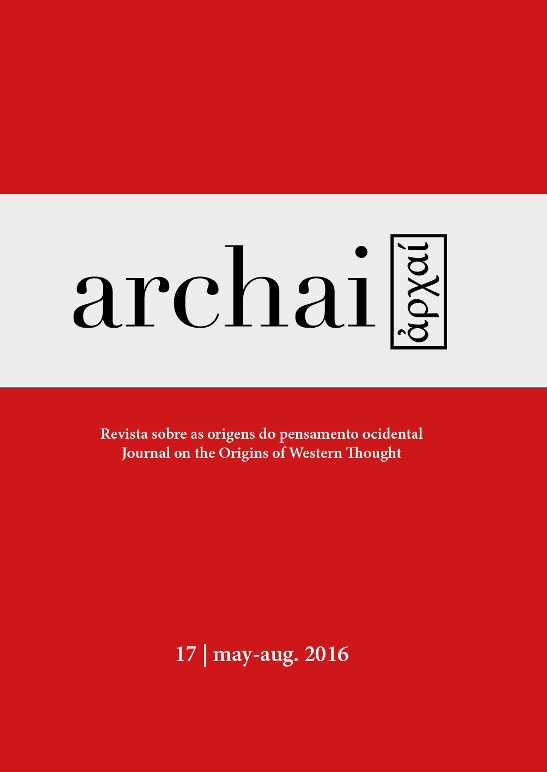To free the soul from the body-prison:
the function of true philosophy
DOI:
https://doi.org/10.14195/1984-249X_17_8Abstract
Plato portrays Socrates, in the last hours in his cell before facing death, as an expert in the hidden details of the Afterlife. He achieves this through the use of mystery terminology, of Orphic-Pythagorean origin, even presenting himself as highly knowledgeable or, even, as an initiate in this domain. However, as usual in many of his dialogues, Plato conveniently transformed this terminology into philosophical concepts. Thus, the notions of the soul’s immortality and initiation are used to define what, on diverse occasions, he calls “correct”, orthos, philosophy. In this context, Plato changed the Orphic metaphor of the body understood as the soul’s tomb, soma-sema, for the image of the body-prison. As I will attempt to show in this paper, this transformation in the metaphor owes to Plato’s interest in rectifying and “improving” the Orphic image of the tomb which, for ethical, epistemological and literary reasons, seemed insufficient to him.
Downloads
Downloads
Published
How to Cite
Issue
Section
License
Given the public access policy of the journal, the use of the published texts is free, with the obligation of recognizing the original authorship and the first publication in this journal. The authors of the published contributions are entirely and exclusively responsible for their contents.
1. The authors authorize the publication of the article in this journal.
2. The authors guarantee that the contribution is original, and take full responsibility for its content in case of impugnation by third parties.
3. The authors guarantee that the contribution is not under evaluation in another journal.
4. The authors keep the copyright and convey to the journal the right of first publication, the work being licensed under a Creative Commons Attribution License-BY.
5. The authors are allowed and stimulated to publicize and distribute their work on-line after the publication in the journal.
6. The authors of the approved works authorize the journal to distribute their content, after publication, for reproduction in content indexes, virtual libraries and similars.
7. The editors reserve the right to make adjustments to the text and to adequate the article to the editorial rules of the journal.



